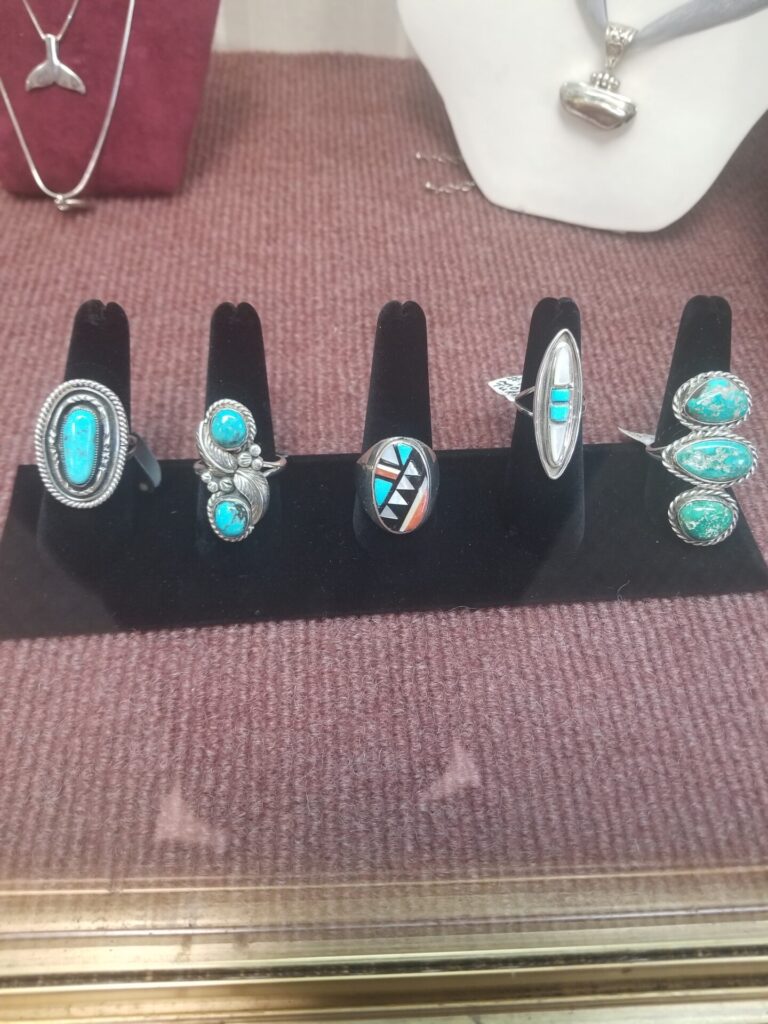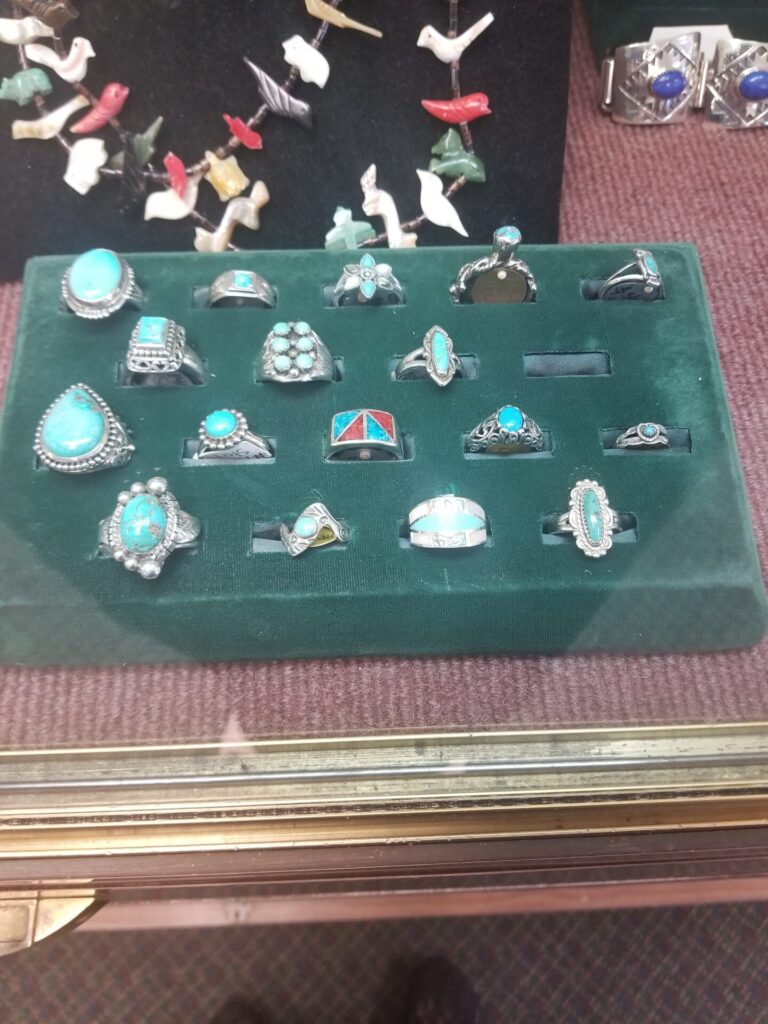One of the most recognizable stones in the United States, especially in the Southwest region, turquoise has been used by indigenous cultures for centuries. It’s also shown up in Ancient Egyptian tombs, including in King Tut’s headpiece, and carved turquoise from Ancient China has been found recently.
Turquoise has a wide range of purported benefits, including protection from falling off a horse, wealth, and making one’s aim with a bow more accurate.
Turquoise is also the gem of the 11th wedding anniversary.
Although New Mexico was the largest producer of turquoise in the U.S. until the 1920s, today most of the U.S. production of this December birthstone comes from Arizona and Nevada. China is the world’s largest producer of turquoise, and Iran has a very famous mine which produces a robin’s egg blue stone.
Turquoise is a semi-translucent to opaque gem that ranges from blue to green and usually has veins of matrix (remnants of the rock in which it formed) running through it, creating distinctive patterns.
Turquoise can be dyed or chemically enhanced by adding an epoxy or acrylic resin for greater hardness or better color. Also seen are cavities filled with a metal-loaded epoxy to imitate pyrite inclusions.
Turquoise has a Mohs rating of 5 to 6, and is easily damaged by harsh chemicals. You shouldn’t put turquoise in an ultrasonic cleaner, due to the vibrations possibly cracking the stone.


